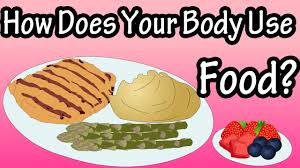Nutrition is a science related to food and how the body uses it. People – like all living things – need food to live.
Food and drink provide a person with energy for every action he performs, whether it is reading a book or running in a race. Food also provides a person with the materials his body needs in order to build his body, repair his tissues, and regulate the work of his organs and systems.
The food we eat directly affects our health. A healthy meal helps prevent some diseases and helps recover from other diseases. Any unhealthy or inappropriate meal increases the risk of various diseases that may affect humans. Eating consistent, balanced meals is the best way to ensure that the body receives all the foods it needs. Nutrition experts and specialists recommend that the daily meal should include a certain number of foods from among five groups:
1- Vegetables 2- Fruits 3- Bread, rice, pies, and wheat foods 4- Milk, yogurt, and cheese 5- Meat, poultry, fish, dry legumes, peas, eggs, and nuts.
Nutritionists coordinate school food services, customize meals for hospital patients, provide nutrition counseling to individuals, manage global food systems, examine the relationship between meals and health, research ways to improve food packaging and distribution, and innovate new foods.
How the body uses food
Food provides some special chemicals that the body needs. These substances, called nutrients, perform one or more of the following three tasks: 1 – They provide the body with materials to build, repair, and maintain its tissues. 2- They work to help the body regulate its operations. 3- They also work as fuel that provides the body with energy. The body needs To energy to perform all its functions.
The body turns food into nutrients through digestion. Digestion begins in the mouth. While chewing food, saliva moistens the food parts and begins to break down starchy foods such as bread, wheat rolls, and other similar dry kneaded wheat foods. After swallowing, food moves through the esophagus, through a tube that leads to the stomach. In the stomach, food is mixed well with digestive juice called gastric juice. This juice speeds up the digestion of foods such as meat, eggs, and milk.
Partially digested food, called chyme, passes from the stomach into the small intestine. In the intestines, other juices complete the digestive process, breaking down food into molecules that pass through the intestinal walls into the blood.
The blood distributes nutrients to cells and tissues throughout the body. There, nutrients are broken down to produce energy, or to be used to build tissues, or to regulate chemical processes. Some of these nutrients are stored in the body and others are used over and over again. But most of these nutrients undergo chemical changes when used in cells and tissues. These chemical changes produce waste that enters the bloodstream.
The blood carries some waste to the kidneys, which filter it from the waste, and the body expels these wastes in the urine. In addition, the liver also purifies some waste and condenses them into a liquid called bile. Bile is stored in the gallbladder until it is needed to aid in the digestive process. The gallbladder then empties the bile into the small intestine. From there, the rest of the bile passes into the large intestine, along with the undigested food parts in the small intestine.
The large intestine absorbs water and small amounts of salts from these wastes. The remaining material, along with other bacteria in the large intestine, forms the final waste, which is feces, which is eliminated from the body.

